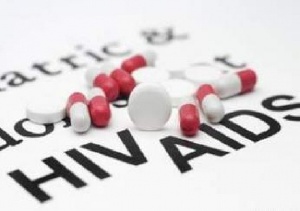Donor governments in 2013 committed 8.1 billion dollars in new funding to support the HIV/AIDS response in low and middle-income countries, down three percent from 2012.
A new Report from the Kaiser Family Foundation and the Joint United Nations Programme on HIV/AIDS (UNAIDS), released in advance of the 2014 International AIDS Conference in Australia, made available to the GNA finds.
The drop in new commitments occurred even though actual disbursements for HIV increased to 8.5 billion dollars in 2013, up 8 percent from 2012.
The increase in disbursements was driven largely by the accelerated release of prior-year commitments by the United States, the world's largest donor, the Report finds. More recent U.S. budgets, however, committed fewer resources for this purpose.
Jen Kates, Vice President of Kaiser Family Foundation, Director of Global Health and HIV Policy, said "Going forward, it’s uncertain whether the U.S. can maintain this level of funding for global HIV."
"Other countries, including donors and recipients, may need to increase their contributions to sustain the global effort."
Luiz Loures, Deputy Executive Director, UNAIDS said, "Ending the AIDS epidemic will only be possible if donors and countries most affected by HIV remain steadfast in scaling-up funding over the long term."
"Commitments need to be made to securing funding for quality HIV prevention efforts and to assuring life-long access to antiretroviral therapy for everyone in need."
In 2013, the U.S. government disbursed a total of 5.6 billion dollars towards the AIDS response in low- and middle-income countries, and to the Global Fund to fight AIDS, Tuberculosis and Malaria (Global Fund), up 600 million dollars (12 percent) from 5 billion dollars in 2012.
In addition to the U.S., four of the 14-donor governments assessed, namely, Australia, Denmark, France, and the U.K., increased total assistance for HIV in 2013.
Four-donor governments, Canada, Italy, Japan and the Netherlands, decreased funding in 2013. However, in the case of the Netherlands, the decrease is due to a shift in support from bilateral HIV funding to the Global Fund.
Support remained flat for five-donor governments – Germany, Ireland, Norway, Sweden, and the European Commission.
The United States accounted for nearly two-thirds (66.4 percent) of total disbursements (bilateral and multilateral) from donor governments. The United Kingdom was the second largest donor (10 percent), followed by France (4.8 percent), Germany (3.4 percent), and Denmark (2.3 percent).
The new Report, produced as a partnership between the Kaiser Family Foundation and UNAIDS, provides the latest data available on donor funding, based on data provided by governments who are members of the Organization for Economic Co-operation and Development’s Development Assistance Committee.
It includes their bilateral assistance to low- and middle-income countries and contributions to the Global Fund, as well as UNITAID.
UNAIDS unites the efforts of 11 UN organizations; UNHCR, UNICEF, WFP, UNDP, UNFPA, UNODC, UN Women, ILO, UNESCO, WHO and the World Bank, and works closely with global and national partners to maximize results for the AIDS response.
Health News of Monday, 21 July 2014
Source: GNA

















